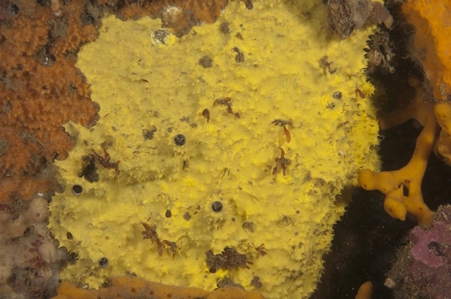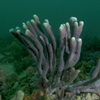General Description
A yellow sponge species with encrusting form. Size of about 40 cm.
Biology
This is common species in Victorian waters. If damaged or exposed to air, yellow specimens of these sponges typically turn dark purple. This colour change is termed aerophobic.
Habitat
Reef and jetty areas, at depths of 10-50 m.
Sponge gardens
Reefs
Distribution guide
Victoria.
Species Group
Depth
Shallow (1-30 m)
Deep ( > 30 m)
Water Column
Max Size
40 cm
Diet
Plankton or particles
Commercial Species
No
Global Dispersal
Native to Australia
Identify
Conservation Status
- DSE Advisory List : Not listed
- EPBC Act 1999 : Not listed
- IUCN Red List : Not listed




